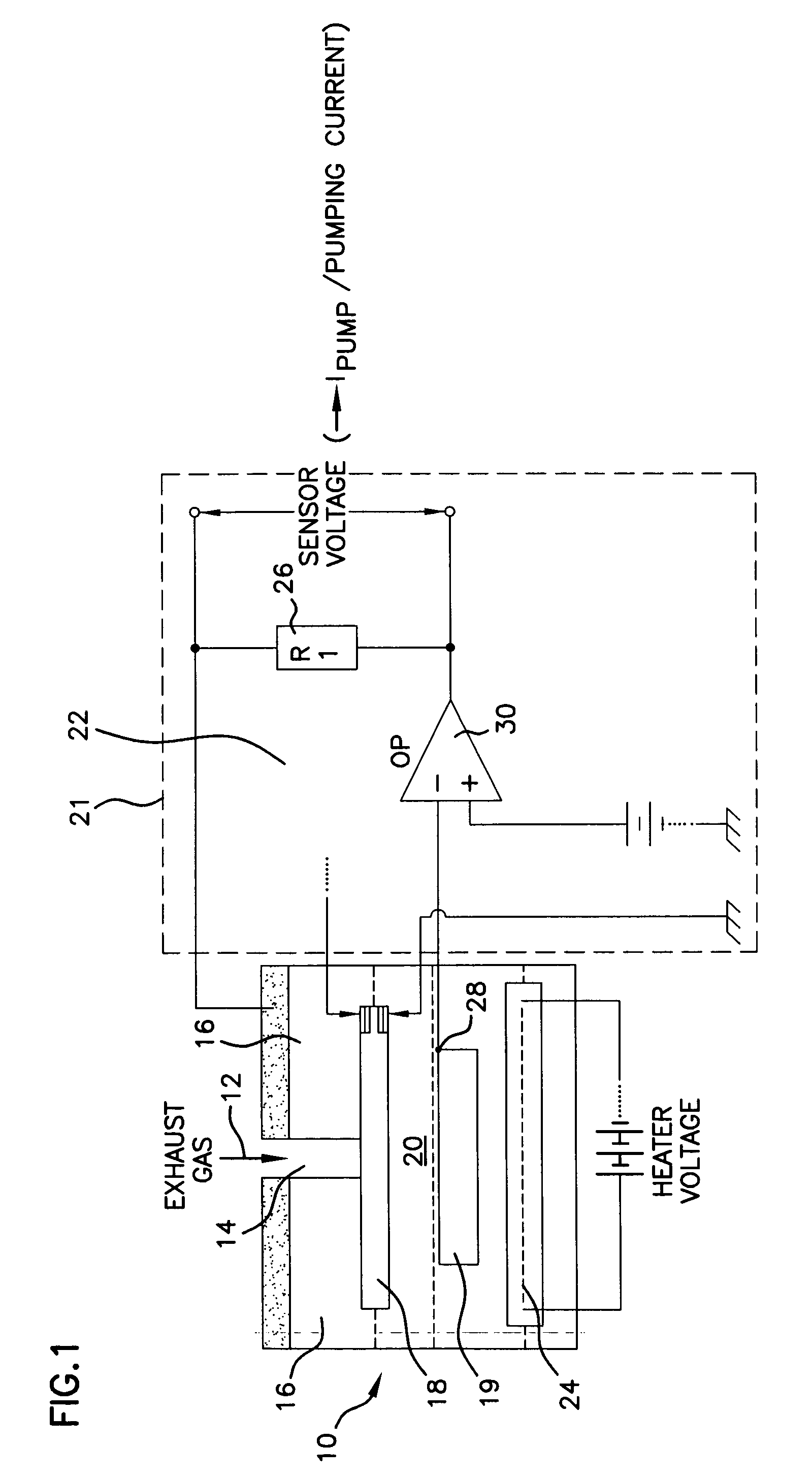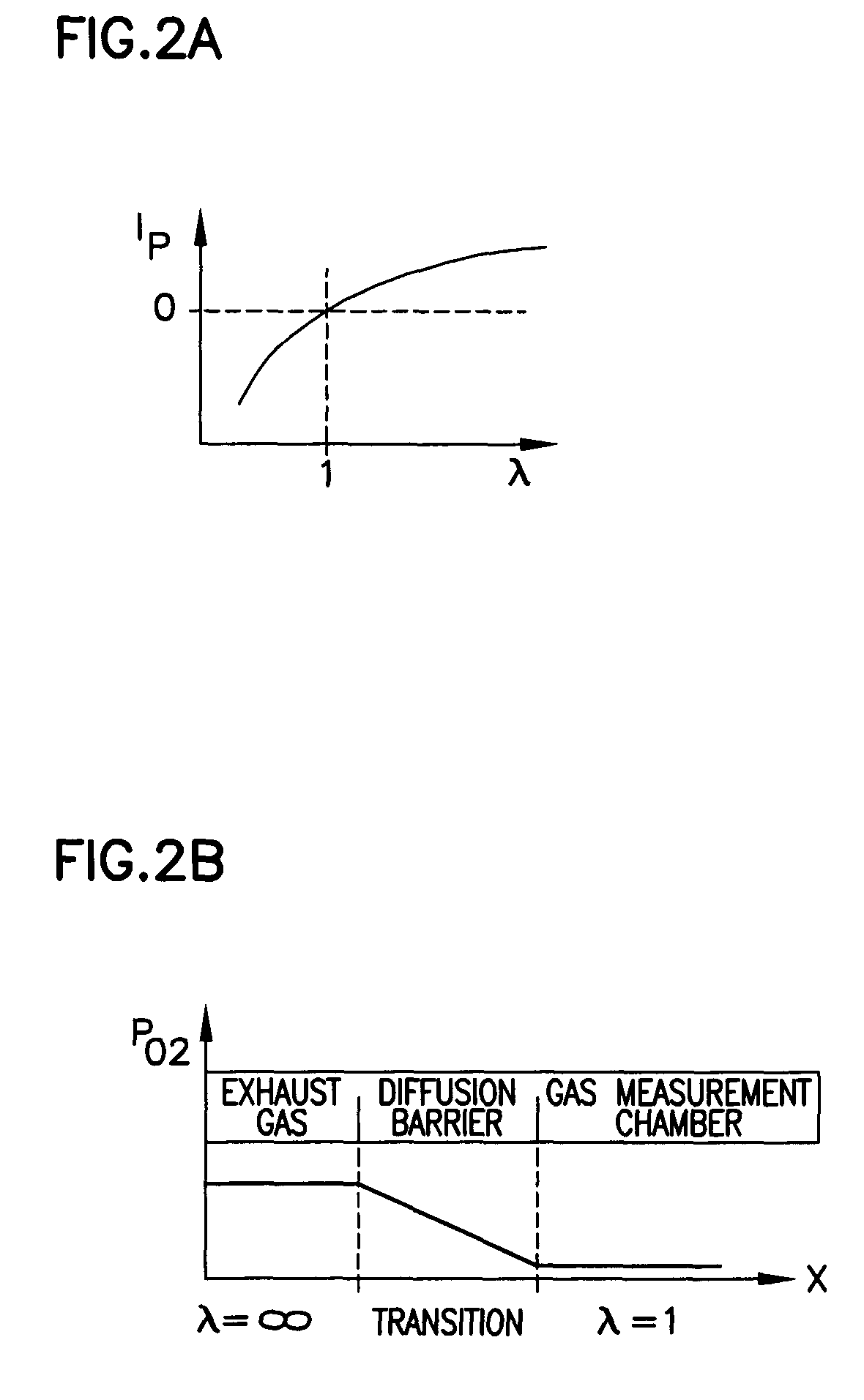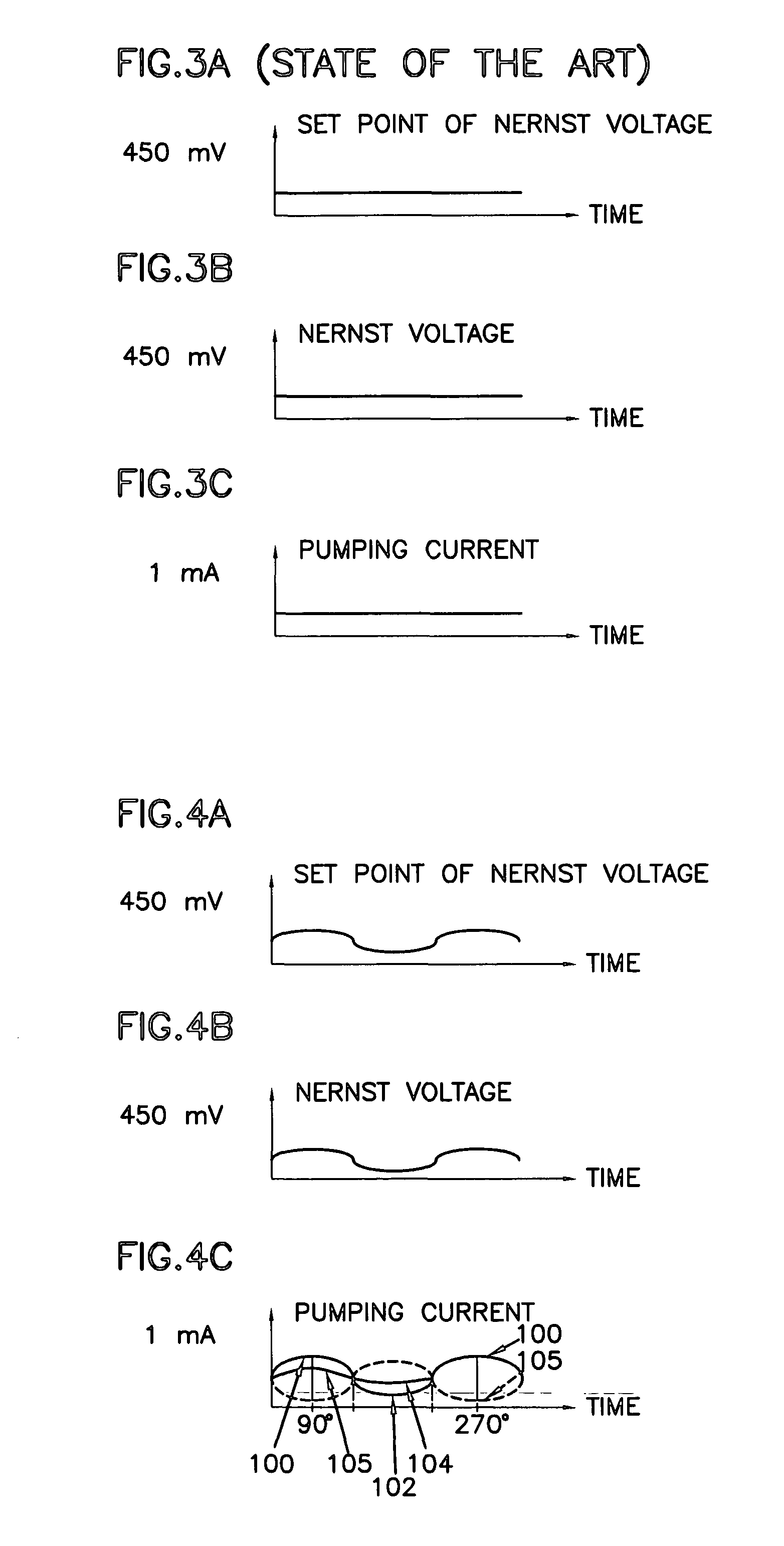Procedure to recognize the diffusion gas composition in a wideband lambda sensor
a wideband lambda sensor and diffusion gas technology, applied in the direction of liquid/fluent solid measurement, instruments, electrochemical variables of materials, etc., can solve the problem that information cannot deliver partial pressure and gas composition simultaneously, and achieve less dispersive cross-section, less dispersion, and high velocity
- Summary
- Abstract
- Description
- Claims
- Application Information
AI Technical Summary
Benefits of technology
Problems solved by technology
Method used
Image
Examples
Embodiment Construction
[0023]In the wideband lambda sensor 10 shown in FIG. 1, exhaust gas 12 moves through a small opening 14 of a pumping cell 16 and a (non-depicted) diffusion barrier into the actual gas measurement chamber 18 of a Nernst cell 20. A reference gas chamber 19 connects to the Nernst cell 20, in which an oxygen reference gas is contained. In the gas measurement chamber 18 a stoichiometric air-fuel-ratio is constantly set. An evaluation and control circuit 22 disposed in a control device 21 or something similar controls in a closed-loop a pumping voltage U_Pump lying at the pumping cell in such a way, that the composition of the gas in the gas measurement chamber 18 lies constantly at LAMBDA=1. In the case of lean exhaust gas 12, the pumping cell 16 pumps oxygen from the gas measurement chamber 18 to the outside. In the case of rich exhaust gas 12 the oxygen must on the other hand be pumped out of the exhaust gas 12 of the surrounding area into the gas measurement chamber; and in so doing, ...
PUM
| Property | Measurement | Unit |
|---|---|---|
| frequency | aaaaa | aaaaa |
| frequency | aaaaa | aaaaa |
| constant voltage | aaaaa | aaaaa |
Abstract
Description
Claims
Application Information
 Login to View More
Login to View More - R&D
- Intellectual Property
- Life Sciences
- Materials
- Tech Scout
- Unparalleled Data Quality
- Higher Quality Content
- 60% Fewer Hallucinations
Browse by: Latest US Patents, China's latest patents, Technical Efficacy Thesaurus, Application Domain, Technology Topic, Popular Technical Reports.
© 2025 PatSnap. All rights reserved.Legal|Privacy policy|Modern Slavery Act Transparency Statement|Sitemap|About US| Contact US: help@patsnap.com



